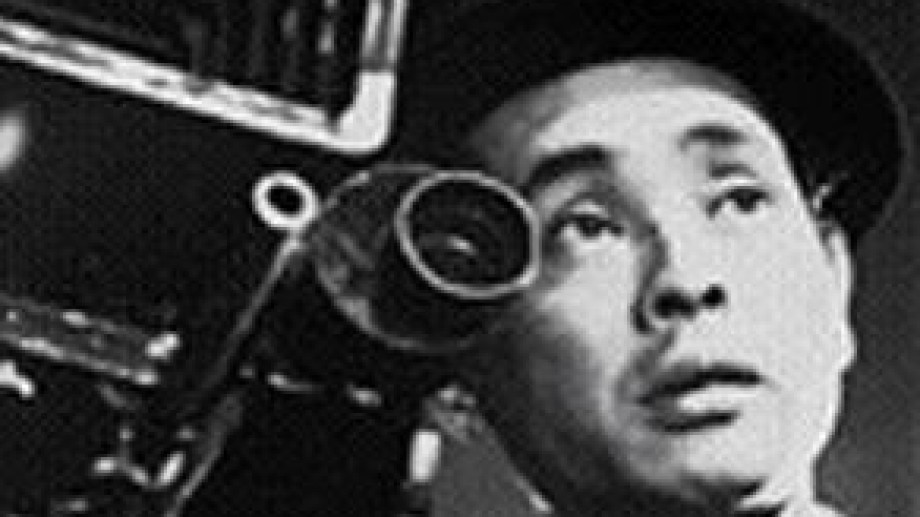
Keisuke Kinoshita
A master of post-war Japanese cinema, Keisuke Kinoshita once described his focus on simple yet significant film subjects to The Japan Times, saying: “There are so many greater, but unknown people in this world.” With this desire to foreground the experiences of ordinary people as extraordinary accounts of Japanese life and society, Kinoshita's films bring a universal appeal and emotional subtlety to stories of social, political, and economic upheaval. Coupling experimental visual styles with genres that range from comedic to melodramatic conventions, Kinoshita's diverse body of work not only evidences an inseparable relationship with Japan's history, but also an intimate level of attention paid to the individual, the personal, and the private.
With perseverence that refused to be swayed by setbacks, Kinoshita followed his passion for film into the director's chair at Shochiku Studios during an interesting transition from occupational oppression to artistic freedom in Japanese cinematic history. Known for its house style, known as “Ofuma Flavor,” Shochiku produced films that were characterized by their bittersweet and subtle combination of humor, realism, domestic subject matter, and emotional content. Contributing greatly to the Japanese New Wave in later decades, Shochiku also launched the careers of international greats including Yasujiro Ozu, Mikio Naruse, Akira Kurosawa, Takeshi Kitano, and even Taiwanese New Wave director Hou Hsiao-Hsien.

Keisuke Kinoshita's Army.
Between 1939 and 1945, however, Japanese cinema fell under increased censorship control and reformations to the industry as a result of World War II, which restricted the creativity of Japanese filmmakers. While policies and laws enforced by the state placed political demands on film production, Kinoshita's early films, including Port of Flowers (1943) and Army (1944), reflect a commitment to themes and political stances that are maintained throughout his long career. For example, pre-production censorship laws may have had power over Kinoshita's script for Army, but the director's decision to stylistically depict the cost of war through an emotional climax—using contrasting shots, editing, and a lack of dialogue in a mother's search for her son—generated substantial controversy amongst film critics and censors at the time of its release.
Even after Japan's official release from occupational power, Kinoshita's films continued to carry the antimilitarist sentiments and juxtaposing themes of his earlier work, bringing social realities into the realm of the personal. Like many of his contemporaries, Kinoshita blended national history and the social and economic upheaval of post-war defeat with human relationships and intimate allegories relating to family relations, and even romance. Twenty-Four Eyes (1954) represents children as innocent victims of the war generation, You Were Like A Wild Chrysanthemum (1955) uses the genre of a Meiji-era melodrama to critique oppression in relation to young love, and A Japanese Tragedy (1953) uniquely incorporates actual newsreels within a docudrama that critiques the first eight years of the post-defeat period.

Kinoshita's Carmen Comes Home
Kinoshita's innovative manipulation of genre and cinematic storytelling also challenged dominant discourse surrounding gender roles, as seen in the leading female characters of Twenty-Four Eyes, The Portrait (1948), Woman (1948), and the unforgettable Carmen Comes Home (1951). As the first major Japanese film to be shot in color, Kinoshita's satirical musical-comedy contrasts the rural and the urban, the East and the West, the old and the new, as a reflection upon the “new woman” in Japanese society. With a new constitution that gave women equal rights to men, as a result of the war and shifts in social identity, the character of Carmen stands as a radical representation of women in Japan who could no longer rely on traditional views of marriage to survive economically. Using the spectacle of dance and performance to highlight women's autonomy and new-found identity in Japanese society, Kinoshita's films lend an oppositional and entertaining view against patriarchal discourse.
In a published introduction to his 1953 screenplay of A Japanese Tragedy, Kinoshita stated: “no matter what kind of social structure, no matter what form of government, I think humans must not be left in a state of misery.” The compassion, affection, and empathy that Kinoshita shows in his writing encompasses the level of insight and emotion the Japanese director brings to the families, children, women, and victims of war that abound in his films. Whether they be comedy, epic, melodrama, or tragedy, Kinoshita's works essentially seek the universal, transcend politics, and shed light on humanity.
Our 15-film retrospective of Keisuke Kinoshita's body of work begins tonight and continues through Wednesday, November 14. See two films together and save with our double feature package!



